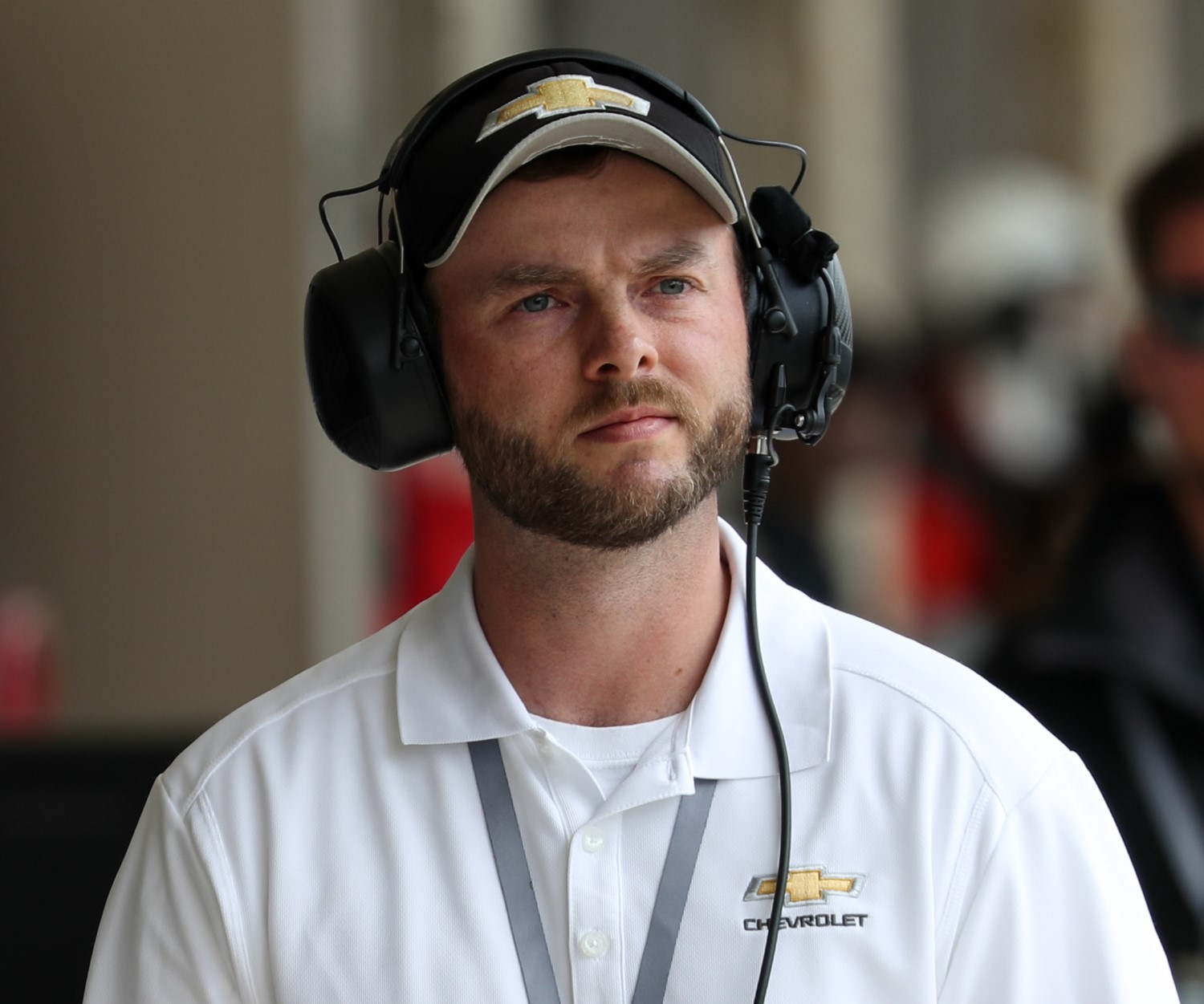IndyCar: What tricks are Chevy doing with their engine Plenum? ** Update**
Autoracing1 spoke with Jim Campbell, Vice president of GM Performance and Motorsports, in the pits today. We asked if there was an update on the engine issue.
“We are testing some cal adjustments in the ECU right now. Eight of the top nine Chevys are out on the track, and we are learning based on the changes we made last night.”
“It is going to be a hot day. Obviously, a hot day with the higher boost level certainly creates some challenges.”
“We are pushing these engines as hard as we possibly can because the only way to get a shot at the pole here is you gotta give it everything. We don’t want to create an issue that is going to take a driver out of contention. If we pull back so far, they won’t have enough horsepower.”
“It is the Indy 500 qualifying. It is the toughest four laps of qualifying in all racing. And we want to give the driver as much horsepower as we can give them.”
“We are so proud to have nine of the 12 drivers in the top 12 running our engine.”
by Lucille Dust
It is obvious that Chevy has brought the most powerful engine for this year’s Indy 500, but whatever tricks they are doing with their Plenum to gain HP has caused unexpected problems.
–by Mark Cipolloni–
Rob Buckner, GM’s IndyCar Program Manager has admitted that they have had some plenum problems this year but when they turned up the turboboost pressure for Fast Friday and qualifying for the Indy 500, the extra pressure inside the plenum has caused an issue, that has caused a number of Chevy drivers to abandon their Indy 500 qualifying runs on Saturday.

Buckner said, “We don’t have a full understanding of why, but [we have] full confidence in our technical group, our partners at Ilmor, everyone at GM motorsports.
“We will figure it out, and we’ll learn from it, and we’ll come back with a better package.”
“We’ll wrap up tomorrow; big day, we’re focused on that, that’s our primary focus,” said Campbell.
“Monday, the teams will run the same engine at 1.3 bar, and Tuesday, Wednesday, Thursday, they’re switching to fresh Chevy engines, race engines. We’ll run at 1.3 bar.
“The incidence at 1.3 bar is much lower; not to say it would never happen, but much lower. Much lower.
“When we get to 1.3 bar, it’ll be a much smaller concern.
“But nonetheless, we don’t want any driver to be affected by it.”
Buckner also explained exactly how a ‘plenum event’, as it is more formally known, occurs.
“So on top of the Chevy cylinder heads in the air inlet system of the engine is a plenum, and there’s some port fuel injectors up there, so while these engines are sustained high speed, that plenum is very full of fuel,” he noted.
“If we have any event over a downshift that can ignore that fuel, it ends up evaporating the plenum of its fuel air charge, temperatures rise rapidly, and it pretty much… to the driver, it’s a perceived engine kill, and they vary in duration, they vary in severity.
“Unfortunately, here today, the ones we had were very noticeable to the drivers. Anything around Indianapolis is very noticeable to the drivers. It pretty much scrapped those runs, which we really hate for all those drivers that we impacted their day.”
